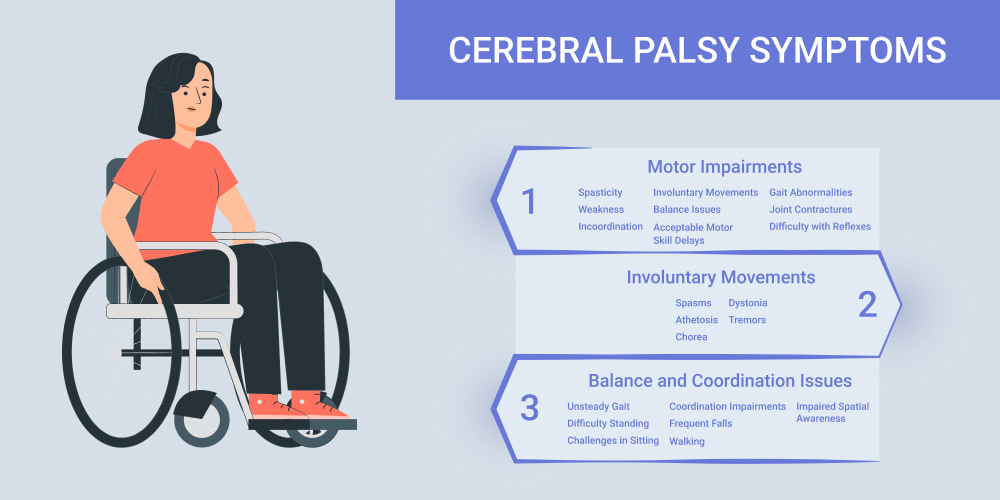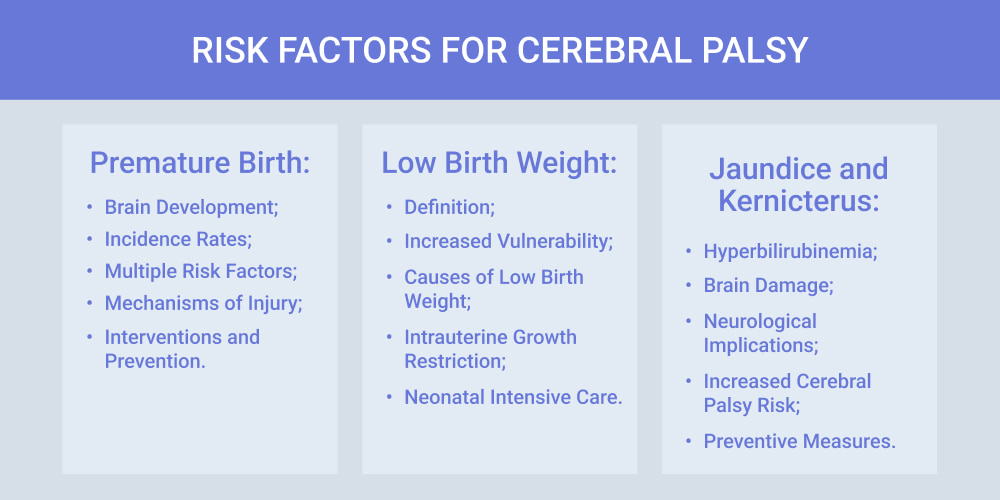Spastic paralysis is a typical neurological malady. It affects a person’s ability to control their muscles and movements. Damage or abnormalities in the developing brain usually cause such illness. It often occurs before or during birth. What is cerebral palsy remains a crucial question for many. Understanding this condition is vital for early diagnosis and effective management. Individuals with CP may experience a range of manifestations. They include difficulties with motor skills, muscle coordination, and posture. These challenges can manifest as stiffness, involuntary movements, and impaired balance.
While the severity of signs varies, spastic paralysis can impact a person’s daily life and independence. Several risk factors contribute to the development of such neurological disorders. Among them are premature birth, low birth weight, and infections during pregnancy. Early identification of manifestations and addressing risk factors are essential. This helps you provide appropriate interventions and support to improve your quality of life.
Definition of Cerebral Palsy
It is a complex neurological condition that primarily affects movement and posture. The definition of cerebral palsy encompasses a group of disorders caused by damage to the developing brain. It is precisely in areas responsible for motor control. This damage can occur during pregnancy, childbirth, or shortly after birth. It is leading to a wide range of motor impairments. Individuals with cerebral palsy may exhibit varying degrees of motor dysfunction. They include muscle stiffness, involuntary movements, and challenges with coordination. The extent and nature of these signs vary widely from person to person, making each case unique. CP is a lifelong condition.
Early intervention and comprehensive care are necessary. They can improve an individual’s functional abilities and quality of life. Comprehending the critical aspects of the definition of cerebral palsy is crucial. It is vital for healthcare professionals, caregivers, and individuals affected by the condition. This knowledge forms the foundation for tailored interventions, therapies, and support systems. They aim to maximize independence and promote well-being for those with cerebral palsy.
How Common is Cerebral Palsy?
CP is a relatively prevalent neurological disorder, with incidence rates varying globally. The critical question of how common cerebral palsy is prompts an exploration of statistical insights:
- Global Occurrence: Spastic diplegia affects approximately 2 to 3 children per 1,000 live births worldwide. This makes it a significant health concern on an international scale.
- Regional Disparities: Incidence rates can differ between regions. They are with some areas reporting higher prevalence. Access to healthcare, socioeconomic conditions, and maternal health contribute to these disparities.
- Risk Factors Influence: Premature birth, low birth weight, and prenatal infections are risk factors. They can elevate the likelihood of cerebral palsy. Understanding and addressing these factors are essential in preventive efforts.
- Lifetime Impact: The condition’s prevalence is notable in childhood. Individuals with cerebral palsy continue to live with its effects throughout their lives. It underscores the long-term impact on affected populations.
- Advancements in Care: Early intervention plans and advances in obstetric practice are severe. They have contributed to improved outcomes. But, the prevalence of cerebral palsy remains an essential factor in public health discussions.
Answering how common cerebral palsy is is crucial for public health planning. It is also vital for resource allocation and awareness raising. It is essential to improve support systems for people living with this disease.
Cerebral Palsy Symptoms

CP manifests through various signs, a neurological condition affecting movement and posture. The specific cerebral palsy symptoms can vary widely among individuals and may change over time. It’s important to note that the severity and combination of these signs differ widely. Individuals with spastic paralysis may face unique challenges. Early intervention, supportive care, and adaptive technologies are critical. They help manage and improve the quality of life of people with cerebral palsy.
Motor Impairments
They are a hallmark of cerebral palsy symptoms. They encompass a variety of challenges related to movement control and coordination. Here is a list of motor impairments associated with CP:
- Spasticity: Increased muscle tone leading to stiffness and difficulty with movement.
- Weakness: Reduced muscle strength affecting various muscle groups.
- Incoordination: Difficulty coordinating movements, impacting activities requiring precision.
- Involuntary Movements: Uncontrolled spasms or jerking motions affecting different body parts.
- Balance Issues: Challenges in maintaining equilibrium, affecting sitting, standing, or walking.
- Acceptable Motor Skill Delays: Difficulty with complex movements, affecting tasks. Among them are writing or buttoning up buttons.
- Gait Abnormalities: Distinctive walking patterns, such as toe-walking or an unsteady gait.
- Joint Contractures: Limited range of motion due to muscle tightness, affecting joint flexibility.
- Difficulty with Reflexes: Altered or exaggerated reflex responses impacting motor coordination.
The combination and severity of these motor impairments vary. It highlights the diverse nature of spastic paralysis presentations.
Involuntary Movements
These are prominent cerebral palsy symptoms. It contributes to the diverse array of signs associated with this neurological condition. These movements disrupt the brain’s ability to regulate and coordinate movement. Here is a closer look at involuntary movements in the context of CP:
- Spasms: Sudden, involuntary muscle contractions that can lead to jerking or twitching motions.
- Athetosis: Slow, twisting movements, often affecting the hands, feet, and face.
- Chorea: Rapid, unpredictable movements that may seem purposeless.
- Dystonia: Sustained muscle contractions causing twisting or repetitive movements and abnormal postures.
- Tremors: Rhythmic, shaking movements, which can vary in intensity.
Involuntary seizures in CP can impact daily activities. They affect mobility, communication, and overall quality of life. Treatment often involves a combination of therapy, medications, and supportive interventions. They help to address specific movement problems.
Balance and Coordination Issues
Such cerebral palsy symptoms are common challenges. They impact individuals’ ability to move, stand, and walk independently. These difficulties arise from disruptions in the brain’s motor control centers. Here’s an exploration of the balance and coordination issues associated with CP:
- Unsteady Gait: Individuals with CP may exhibit an uneven or unsteady walking pattern. It affects their ability to move smoothly.
- Difficulty Standing: Maintaining an upright position can be challenging. It leads to instability when standing still.
- Challenges in Sitting: Maintaining a stable sitting posture may be difficult for some people.
- Coordination Impairments: Difficulty in coordinating movements between different body parts. It impacts tasks that require precision.
- Frequent Falls: Balance issues contribute to an increased risk of falls. Especially during activities that involve movement.
- Impaired Spatial Awareness: Difficulty judging distances can affect coordination during activities.
- Walking: Some individuals with CP may walk on their toes, further complicating balance.
Therapies and exercises play crucial roles in addressing these balance and coordination challenges. They help individuals with CP enhance their mobility and independence in daily life.
Risk Factors for Cerebral Palsy

CP is often associated with various risk agents. They contribute to the development of this neurological condition. Identifying and comprehending these key risk factors for cerebral palsy is critical. It is necessary for preventive measures and early intervention. Understanding these risk agents empowers healthcare professionals to implement preventive measures. Also, it helps to offer appropriate prenatal care and identify early signs of cerebral palsy for timely intervention.
Premature Birth
Premature birth, defined as delivery before 37 weeks of gestation, is a significant risk factor for cerebral palsy. This is a critical association between premature birth and such disorders. This highlights the vulnerability of the developing brain to complications. They appear when it is not given sufficient time to mature. Here are essential points to understand about this relationship:
- Brain Development: The last weeks of pregnancy are crucial for fetal brain development. Premature infants may not have fully developed cerebral structures. They increase the risk of neurological issues, including CP.
- Incidence Rates: Babies born before 32 weeks are more likely to develop cerebral palsy compared to full-term babies.
- Multiple Risk Factors: Premature birth often coincides with other risk factors. Among them are low birth weight and respiratory complications, further elevating the risk of cerebral palsy.
- Mechanisms of Injury: Premature birth can have serious consequences. These are hypoxia, intraventricular hemorrhage, and periventricular leukomalacia. They contribute to brain damage and increase the likelihood of CP.
- Interventions and Prevention: Intensive medical care and interventions in neonatal units. They aim to cut the impact of prematurity on brain development, potentially reducing the risk factor for cerebral palsy.
Knowing the relationship between preterm birth and such disorder is essential. It highlights the need for prenatal care. Among them are the early identification of risk factors and specialized care for preterm infants. This is vital to mitigate potential neurological complications.
Low Birth Weight
Low birth weight is a recognized vital risk factor for cerebral palsy. It emphasizes the impact of inadequate fetal growth on neurological development. Here are essential insights into the relationship between low birth weight and the risk of cerebral palsy:
- Definition: Low birth weight is typically below 2,500 grams (5.5 pounds). Infants with low birth weight are more susceptible to developmental challenges. They include those affecting the brain.
- Increased Vulnerability: Babies born with low birth weight often face an increased risk of developing CP. The association highlights the vulnerability of underdeveloped organs and systems.
- Causes of Low Birth Weight: Such factors include premature birth and poor maternal nutrition. Also, these include maternal health problems and multiple pregnancies.
- Intrauterine Growth Restriction: Low birth weight may result from inadequate fetal growth. It is famous for intrauterine growth restriction. IUGR can impact organ development, including the brain.
- Neonatal Intensive Care: Low-birth-weight infants may require specialized care in NICUs. It helps to address potential complications and reduce the risk factor for cerebral palsy.
Comprehending the role of low birth weight as a risk factor for CP highlights the importance of prenatal care.
Jaundice and Kernicterus
These are significant factors associated with an increased risk of CP, particularly in newborns. Understanding this relationship is crucial for early intervention and preventive measures. Here’s a numerous list highlighting key aspects:
- Hyperbilirubinemia: Jaundice occurs when there is a buildup of bilirubin in the baby’s blood. It causes yellowing of the skin and eyes.
- Brain Damage: If severe jaundice is not promptly treated. Excessive bilirubin levels can lead to kernicterus, a form of brain damage.
- Neurological Implications: Kernicterus affects explicitly the basal ganglia and the auditory system. It contributes to motor and developmental issues.
- Increased Cerebral Palsy Risk: Kernicterus is a risk factor for cerebral palsy. They highlight the importance of monitoring and treating jaundice in newborns.
- Preventive Measures: Phototherapy or exchange transfusions can effectively manage jaundice. They reduce the risk of kernicterus and associated complications.
Knowledge of the relationship between jaundice, kernicterus, and this brain disorder y is vital. It highlights the importance of preventive health care. It helps to reduce the risk of neurological complications in newborns.
Conclusion
So, what is cerebral palsy? It becomes clear that it is a neurological disorder impacting movement and posture. The signs, ranging from motor impairments to speech challenges, highlight the condition’s complexity. Recognizing risk factors, such as premature birth and low birth weight, is pivotal for early intervention. In pursuing holistic care, initiatives like Lone Star Neurology emphasize support and achievement. They play a critical role in improving people’s lives with CP.
FAQ
Can cerebral palsy be cured?
Cerebral palsy is uncureness. However, various therapies and interventions can help manage signs and improve the quality of life.
What types of therapies help people with cerebral palsy?
Different therapies, including physical, occupational, and speech therapy, play integral roles. They help individuals with cerebral palsy enhance their motor skills, communication, and independence.
Is cerebral palsy hereditary?
Cerebral palsy is typically not hereditary, with most cases resulting from factors. Among them are prenatal complications, birth-related issues, or early childhood events.
How can parents support a child with cerebral palsy?
Parents can support a child with cerebral palsy. They need to foster a supportive and inclusive environment. Also, parents need to collaborate with healthcare professionals. Tailoring interventions and advocating for their child’s unique needs and abilities is vital.










Please, leave your review
Write a comment: